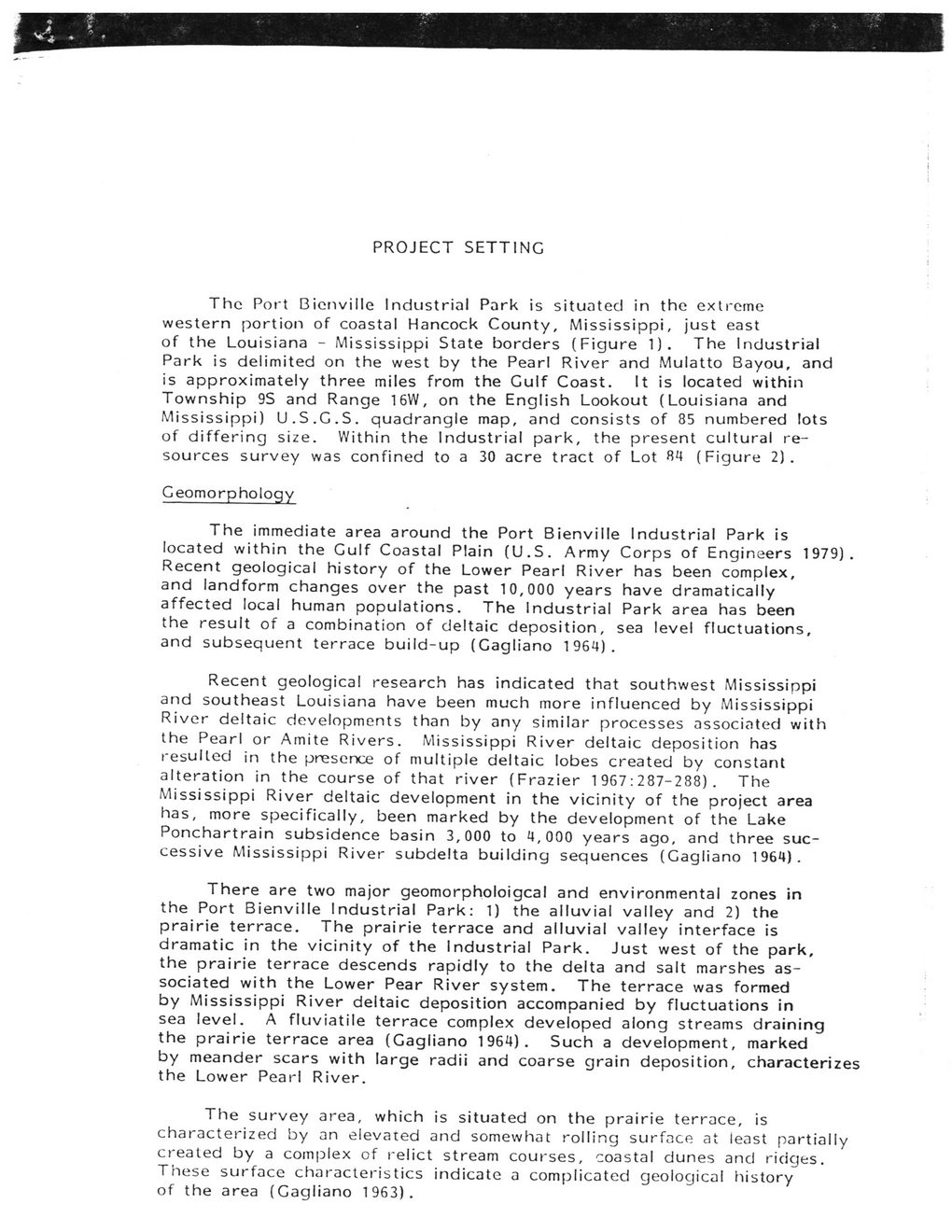This text was obtained via automated optical character recognition.
It has not been edited and may therefore contain several errors.
PROJECT SETTING The Port Bienville Industrial Park is situated in the extreme western portion of coastal Hancock County, Mississippi, just east of the Louisiana - Mississippi State borders (Figure 1). The Industrial Park is delimited on the west by the Pearl River and Mulatto Bayou, and is approximately three miles from the Gulf Coast. It is located within Township 9S and Range 16W, on the English Lookout (Louisiana and Mississippi) U.S.G.S. quadrangle map, and consists of 85 numbered lots of differing size. Within the Industrial park, the present cultural resources survey was confined to a 30 acre tract of Lot 84 (Figure 2). Geomorphology The immediate area around the Port Bienville Industrial Park is located within the Gulf Coastal Plain (U.S. Army Corps of Engineers 1979). Recent geological history of the Lower Pearl River has been complex, and landform changes over the past 10,000 years have dramatically affected local human populations. The Industrial Park area has been the result of a combination of deltaic deposition, sea level fluctuations, and subsequent terrace build-up (Gagliano 1964). Recent geological research has indicated that southwest Mississippi and southeast Louisiana have been much more influenced by Mississippi River deltaic developments than by any similar processes associated with the Pearl or Amite Rivers. Mississippi River deltaic deposition has resulted in the presence of multiple deltaic lobes created by constant alteration in the course of that river (Frazier 1 967:287-288). The Mississippi River deltaic development in the vicinity of the project area has, more specifically, been marked by the development of the Lake Ponchartrain subsidence basin 3,000 to 4,000 years ago, and three successive Mississippi River subdelta building sequences (Gagliano 1964). There are two major geomorpholoigcal and environmental zones in the Port Bienville Industrial Park: 1) the alluvial valley and 2) the prairie terrace. The prairie terrace and alluvial valley interface is dramatic in the vicinity of the Industrial Park. Just west of the park, the prairie terrace descends rapidly to the delta and salt marshes associated with the Lower Pear River system. The terrace was formed by Mississippi River deltaic deposition accompanied by fluctuations in sea level. A fluviatile terrace complex developed along streams draining the prairie terrace area (Gagliano 1964). Such a development, marked by meander scars with large radii and coarse grain deposition, characterizes the Lower Pearl River. The survey area, which is situated on the prairie terrace, is characterized by an elevated and somewhat rolling surface at ieast partially created by a complex of relict stream courses, coastal dunes and ridges. These surface characteristics indicate a complicated geological history of the area (Gagliano 1 963).

Claiborne Historical Site Guerin-Giardino-(062)